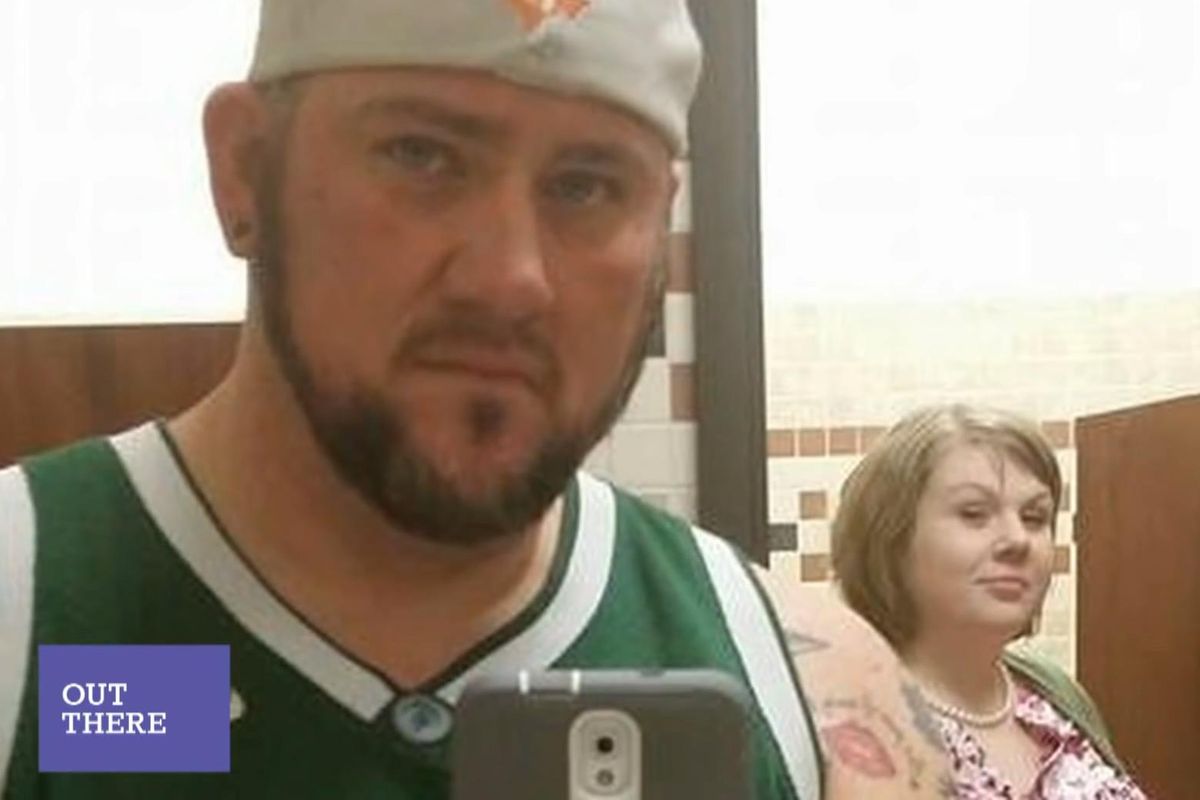Microbiology lab technician Tasha Sturm decided to do something kinda cool with a handprint: see what kind of bacteria is on it.
Sturm, who works at Cabrillo College, told me the first lab project that students at her college do is swab something in the classroom — like the bottom of a shoe or a cellphone — and incubate the plates to see what kinds of bacteria grow all around us.
Years ago, she thought her kids might find it interesting to know what kinds of germs were on their hands. Plus, since it provided such a good lesson for her class, each year she has her kids make a handprint of bacteria — literally.
Sturm's 8-year-old son's handprint on a large TSA plate. Image by Tasha Sturm, originally posted to Microbe World.
So what is all of that stuff?
"The large swirly blob in the lower right ... is more than likely a Bacillus spp," Sturm said, and "the colored colonies are either Serratia or Micrococcus or yeast — normally found in the environment or skin."
"The white circular colonies are more than likely Staphylococcus spp, which again is normally found on the skin. The organism seen between the thumb and pointer finger is a contaminant."
Before you panic because those things all sound gross, it's important to note her deliberate double use of the word "normally" here. But more on that soon.
Here's a close-up of the large swirl that's pictured in the lower right corner of the image above:
So gross ... yet so neat! Image by Tasha Sturm, originally posted to Microbe World.
That's the bacillus, which is a bacteria often found in soil and water.
Don't freak out about what's on your and your kids' hands just yet — not all bacteria are bad!
Harmless ones that live on or in our bodies do not cause disease. "We have a large number of bacteria that live 'with us' that are beneficial," Sturm explained. "Some aide in digestion, make vitamin K, etc."
She assured me that the bacteria in the handprint are "part of the bodies normal flora and do not make us sick unless the person is immunocompromised, such as [through] a break in the skin."
"People who are healthy come in contact with millions of bacteria every day with adverse effect," she said, "Coming in contact with bacteria actually strengthens our immune system."
Win-win!
However, there are some bacteria that can make you sick — some cause salmonella, and there are particular strains of staph, E. coli, and bacillus, for example, that are bad.
"When these get into the wrong place in the body, they will make us sick," she explained. But fear not! "Most times these bacteria are not something we come in contact with."
It's OK to let your kids get dirty!
"Unless your kids have a health condition that requires you to be more vigilant," Sturm said, "let them have fun and get dirty; it's what they need to develop a healthy immune system."
But for the love of everything, practice good hand-washing.
After using the bathroom and before eating, everyone should wash their hands well. (I mean, seriously.)
"As microbiologists, our job, especially in education, is to make the invisible world visible so it's easier to understand," Sturm says. "I think the image of the handprint was a graphic way to show others what's out there and the beauty of microbiology. I think this image did just that."
Take another look and find instructions for creating one of these yourself below:
Want to do this experiment with your kids? You totally can. I asked Sturm for step-by-step directions on how to recreate this cool bit of science for any parents who might want to do it with their kids (or, ahem, any adults) and here's what she said: "We used a large Tryptic soy agar (TSA) plate. TSA is a nutrient agar that is used by microbiologist to culture bacterial that has the consistency of hard jello. My son placed his hand gently on the plate making sure to pressing the fingers/palm to make contact with the agar. The plate was covered with the lid and place in a 37 degree C incubator for 24-48 hours. Incubate agar side up. This will grow the normal flora on the hand like Staph., Micrococcus, etc. Take the plate out and let it incubate/set out with the lid on at room temperature (22 degrees C) for several days (3+ days). Normal flora will continue to grow (slowly) and yeast/fungi will start to grow....usually colored colonies (red/pink/yellow). Something to remember is that one colony, or one blob/circular growth seen on the agar, came from the growth or multiplication of one bacteria. We are giving that one bacteria the perfect growing conditions nutritionally incubating it in a warm incubator, 37 degree's C. Once the plate has grown for 24-48 hrs and the bacteria have multiplied it is considered a biohazard and needs to be disposed of appropriately."
Science is so cool!






















